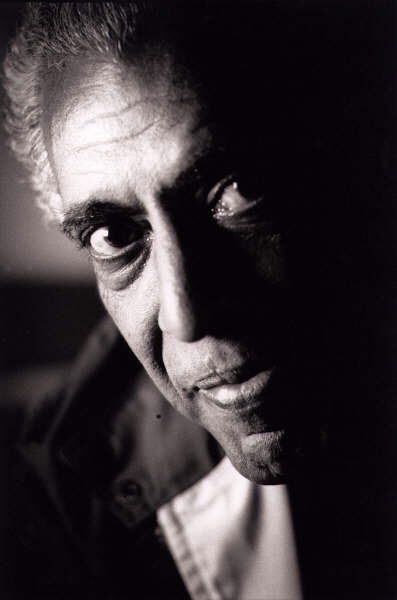When Abdelrahman Munif wrote his great work of fiction in the eighties, his name for the five novels as a whole was Cities of Salt (Mudun al-milh). Today, this title is usually (and of course wrongly) used for the powerful first novel of the quintet, which deals with the ravages caused by petro-capitalism to the lives of Saudi Arabia’s indigenous Bedouin communities. What is interesting is that Munif’s own title for the first novel was al-Tih (التيه ). The routine translation of this as “wilderness” misses the true purport of the word in this context. Like Eliot’s Wasteland, what Munif was driving at is that in the Saudi kingdom, indeed in the whole of the Middle East, given the form it took, the alliances it struck and the devastation it caused, capitalism engendered a wasteland. The first of the five novels built a powerful image of the way the entry of American oilmen brought this about.
Although the novel was entirely about oil, “[n]o reader of Cities of Salt … would have the slightest hint the author had studied oil economics… Never once do you see oil, though it flows invisibly through every page. It is scarcely mentioned in the first hundred pages of Cities of Salt”. And Munif was just as fascinated and saddened by the political consequences of oil. In a 1999 interview to a French paper he said, “Oil joined and embraced political Islam, providing it with much needed power… At the same time, oil enabled dictatorial regimes to continue practicing the cruelest forms of repression. The increase in oil and wealth coincided with an increase in reaction and dictatorship which spread throughout the region”.

Munif viewed the Middle East as “one vast carceral state” (a description that would apply to Israel as well), one that was easier to build given the sheer economic repression underlying the Saudi model. Not only was the model itself economically unsustainable (when Tariq Ali asked Munif what “cities of salt” meant, he explained, “Cities of salt means cities that offer no sustainable existence. When the waters come in, the first waves will dissolve the salt and reduce these great glass cities to dust”), but its creation presupposed widespread deracination, a sort of modern replay of primitive accumulation. As the first tractors moved into Wadi al-Uyoun to begin what Munif called their “butchery” of the oasis, “The trees”, he writes, “cried for help, wailed, panicked, called out in helpless pain and then fell entreatingly to the ground, as if trying to snuggle into the earth to grow and spring forth alive again” (Cities of Salt, p.106). And following that piece of destruction, the homeless residents of the wadi were relocated to the refinery town of Harran (real-life Dhahran on the Gulf coast), “where they find themselves housed in furnace-like metal shacks and remade as laborers in a wage economy under foreign mastery” (Nixon,Slow Violence and the Environmentalism of the Poor, p. 83). Probably no novel in Arabic has fused class and racial segregation as vividly as this one. Dhahran was based on a strict segregation between the Arab & American communities, the Arab and American “compounds”, and Munif’s repeated references to their strict segregation and the sexual charge linked to it are strongly reminiscent of the famous passage in Fanon about the “settler’s town”.
Finally, there could scarcely be a sharper contrast than between Munif’s novel and La via del petrolio, the black & white documentary that Bertolucci made for the Italian oil giant ENI in 1966. In a brilliant analysis of the film, Georgiana Banita points out that “Bertolucci enacts th[e] dehumanization of the oil world by focusing on wells, pipes, tankers, and refinery towers at the expense of the people who man and operate them”, but says almost nothing about how oil politics changed the Middle East or about the communities affected by its rapid surge. But in one respect there is a strange and interesting convergence with Munif’s approach. “At no time during this long journey (from Isfahan and the Zagros Mountains via the Suez Canal to the refinery at Ingolstadt) does petroleum appear in the frame: in Iran it is yet untapped, and in the port area and inside the tanker we are invited to imagine it filling visible containers, until the pipeline picks it up in Italy and feeds it directly into refineries. Bertolucci translates the film’s poetic message on the blindness of petroleum into its screen language. Petroleum never sees the light of day, nor can it be captured on camera. Hence the extensive use of aerial footage, which not only denotes the sheer vastness of oil spaces but also suggests something of the representational blockage posed by crude”.
Munif’s novel, the first in the quintet, is available here: https://warwick.ac.uk/…/cities_of_salt_-_abdelrahman_munif.…
Banita’s essay on the Bertolucci documentary comes from a book accessible on jstor: https://www.jstor.org/stable/10.5749/j.ctt1287nvk
Laleh Khalili’s seminal book Sinews of War and Trade (Verso, 2020), which among other subjects deals with the massive reshaping of the Gulf ports largely in relation to oil, makes frequent mention of Munif’s novel.
Also see https://thewire.in/books/abdelrahman-munif-cities-of-salt
By Jairus Banaji

